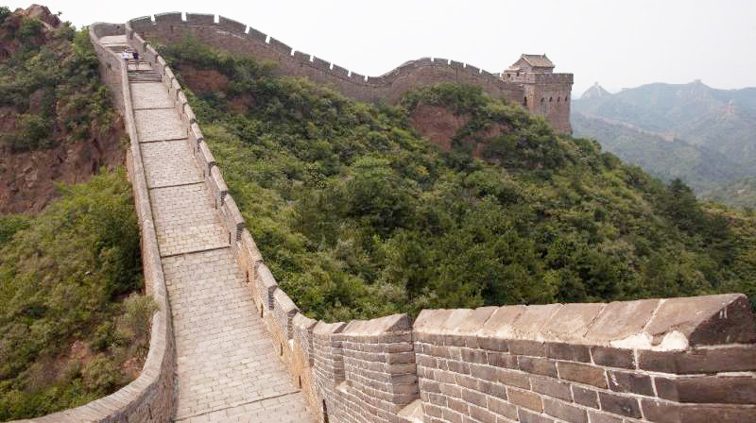BEIJING : The renovation of a 700-year-old stretch of China’s historic Great Wall in Suizhong county has triggered a public outcry and scrutiny over claims of poor workmanship.
The little-known Xiaohekou section, which has a reputation among hikers as the most beautiful original Great Wall, is a nationally protected cultural relic.
The restoration occurred in 2014 and drew public attention after someone recently posted photos online.
In the photos, the wall appears to have been covered in a smooth, white material.
Local authorities say it is sandy soil.
But netizens thought it looked like cement, which seemed to destroy its original beauty and its status as a cultural relic.
Liu Fusheng, a local resident who claimed to have climbed the Xiaohekou section every day, said construction workers used cement mixed with white dust and sandy soil to flatten the walkway into a smooth surface, Beijing News reported.
However, local authorities said that sort of speculation was inaccurate.
The cultural relics protection bureau of Suizhong county said the repair was an emergency project because the section might have collapsed in heavy rain. It said that the material used was sandy soil, not cement, state-run China Daily reported today.
The Liaoning provincial culture department also said the section had been in grave danger of being ruined by a natural disaster, such as a flood, so urgent project was undertaken to lay a protective cover on severely damaged areas.
According to the department, the restoration work extends eight kilometres.
“There is no wall left in this section, only the stone foundation, which is badly damaged. The experts’ suggestion was to put the original stones back and put a very thin cover on it for protection from dust and water,” department spokesman Yang Shitao said.
Built from the third century B.C. To the Ming Dynasty (1368-1644), the Great Wall stretches over 21,000 kms.
Over four million tourists visit the Great Wall every year as it is the centre of China’s tourism campaign.
Each tourist pays about USD 17 to visit it at different places, especially in Beijing.
According to SACH statistics, about 30 per cent of a 6,200-km section of the wall built in the Ming Dynasty has disappeared, and less than 10 per cent is considered well- preserved.
The Great Wall has faced threats from both nature and humans. Earthquakes, rain, wind and other natural elements have left the wall with many decayed and crumbling bricks. (AGENCIES)


